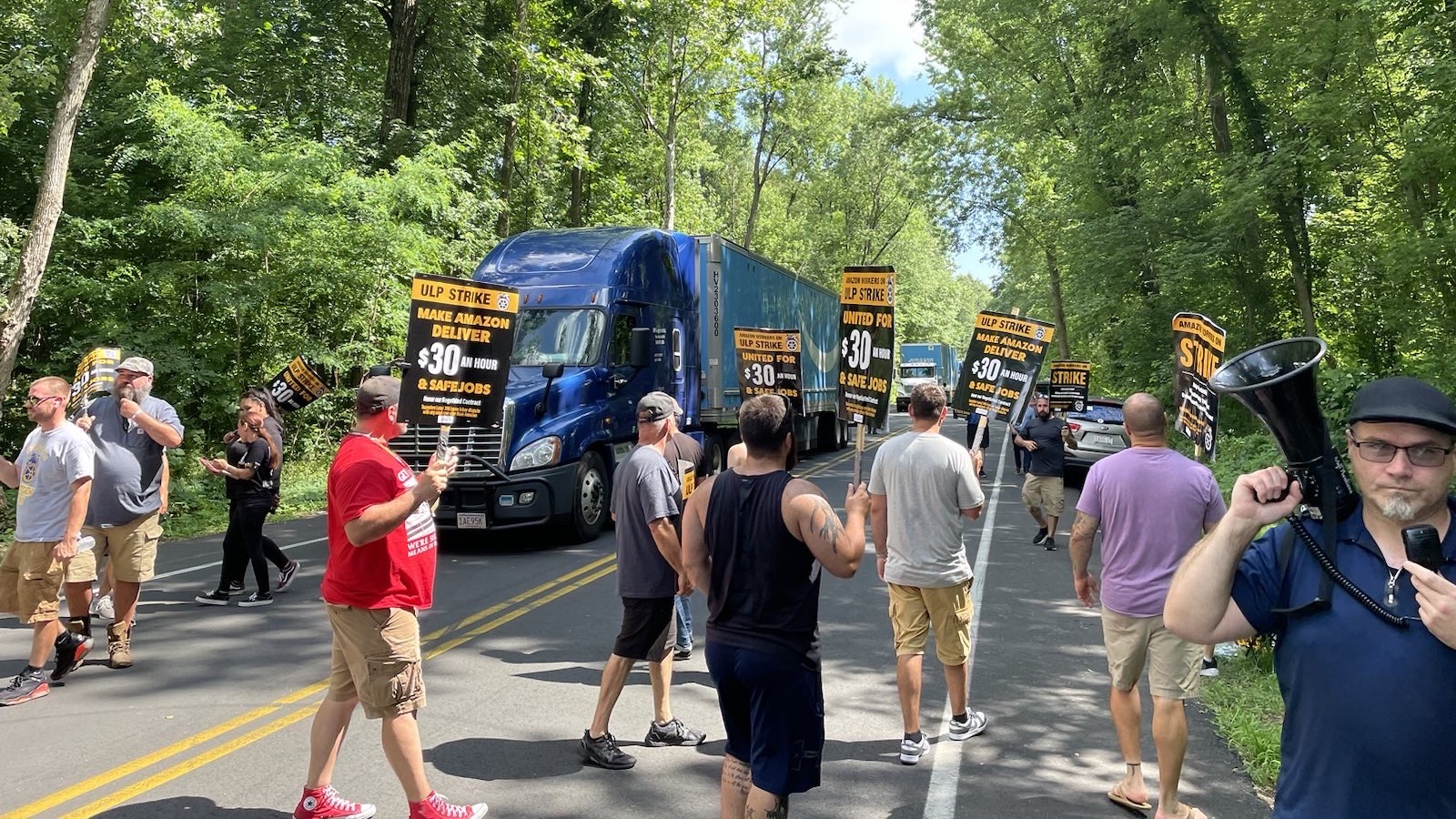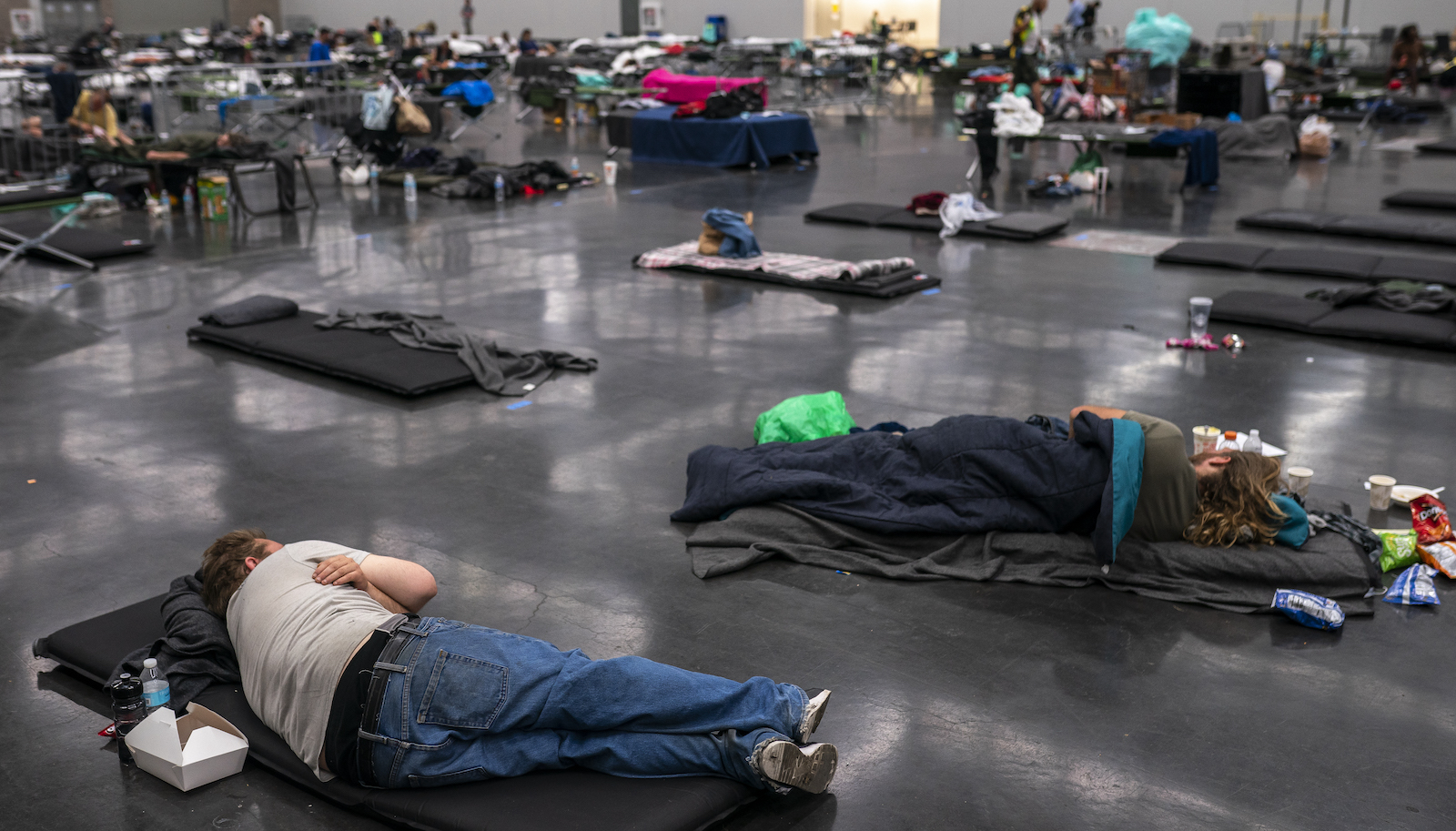
This story is part of Record High, a Grist series examining extreme heat and its impact on how — and where — we live.
Heat waves can delay flights and melt airplane tarmac, but Amazon won’t let them hinder Prime deliveries. Extreme heat and unsafe working conditions under the merchant giant have now spurred drivers to unionize. In Southern California, 84 delivery drivers joined the International Brotherhood of Teamsters and negotiated the first union contract among any Amazon workers in the country. And since June 24, these workers have been on an indefinite strike.
Amazon’s requirement of drivers to make up to 400 stops per day, even when temperatures exceed 100 degrees Fahrenheit, can make operating one of those ubiquitous gray and blue vans a particularly hazardous occupation. Raj Singh, a driver, knows that only too well.
“Sometimes it reaches 135 degrees in the rear of the truck and there’s no cooling system,” said Singh, who has worked the job for two and half years and through the height of the pandemic. “It feels like an oven when you step back there. You instantly start feeling woozy, and it’s gotten to the point where I’ve actually seen stars.”
Even on scorching days, said Singh, “Amazon sets these ridiculous paces. Some people even have to miss their guaranteed 15-minute breaks, because if we break the pace, they contact us to try and find out why we’re behind.”
“On the days that you work, it’s basically mandatory overtime,” he added. “You don’t stop until you’re done or you get reprimanded.”
Last August, after the drivers prepared a list of demands around pay, safety, and extreme temperatures, Amazon responded by offering workers two 16-ounce bottles of water a day.
Heat exposure affects delivery drivers across companies. UPS has reported at least 143 heat-related injuries on the job in recent years, and a United States Postal Service driver recently died of heat exposure. UPS, whose iconic brown-uniformed drivers are directly employed by the company, recently agreed to install air conditioners in their trucks after drivers across the country picketed work sites and threatened to strike. But Amazon’s 275,000 drivers are hired through 3,000 third-party subcontractors, with whom Amazon can cancel contracts with little explanation or warning, making it particularly difficult for workers to unionize or fight to improve conditions.
Despite the fact that workers who deliver Amazon packages sport branded vests, shirts, and pants; drive Amazon-branded trucks; have schedules and wage floors set by Amazon; receive routes from an Amazon app; and can be disciplined and fired by Amazon, the company claims they aren’t technically employees. On paper, the drivers are employed by a network of small businesses that each rent 20–40 vans and employ up to 100 people. The 84 drivers in Palmdale work for Battle Tested Strategies, one of these businesses, which operates out of an Amazon warehouse.
On April 24, the drivers announced that they had formed a union and had bargained a contract with Battle Tested Strategies to address fair pay and worker safety in the heat. They asked that Amazon respect the terms of the new contract, which guarantees $30 hourly wages, health and vehicle safety standards, and the right to refuse unsafe deliveries.
[Read next: The shared history of unions and the environmental justice movement]
Instead, the company immediately announced that the subcontractor “had a track record of failing to perform and had been notified of its termination for poor performance well before today’s announcement.” It also said their contract would expire on June 24. That morning, the 84 drivers awoke to no assigned routes from Amazon or Battle Tested Strategies. They are currently on an indefinite strike (in their view, from their Amazon jobs) and hope to convince the trillion-dollar company to recognize the union, respect the contract, and end what they view as retaliation against workers. Teamsters across the country are now picketing warehouses in solidarity.

The Teamsters union, which represents the 84 drivers, has argued that Amazon exerts nearly total control over these workers. In their estimate, the company must recognize these drivers as employees and bargain with them directly in order to keep them safe in the heat.
“Fulfilling the promise of the contract will require fundamentally changing Amazon’s exploitative business model,” said Randy Korgan, head of the Teamsters’ Amazon division. “And we will keep fighting until that happens.”
Amazon maintains that the drivers don’t actually work for the company. Spokesperson Eileen Hards called the Teamsters “intentionally misleading,” adding that the strike “does not include Amazon employees and is mostly attended by outside activists.” She reiterated that Amazon had terminated its contract with Battle Tested Strategies.
But according to Daniel Ocampo, a legal fellow at the National Employment Law Project, the National Labor Relations Act defines employment status by whether companies control conditions like pay, safety, and day-to-day work. “All of those are controlled at least jointly by Amazon,” he said. “For the drivers to meaningfully bargain over their conditions of work, they need to have Amazon at the table.”
“We’re here so we can have fair pay and safe jobs,” added Singh. “And we’re trying to get this done, not just for us but for every delivery driver that works for Amazon.”
This story has been updated to clarify that the drivers’ strike began on June 24.
This story was originally published by Grist with the headline Extreme heat prompts first-ever Amazon delivery driver strike on Jul 11, 2023.




